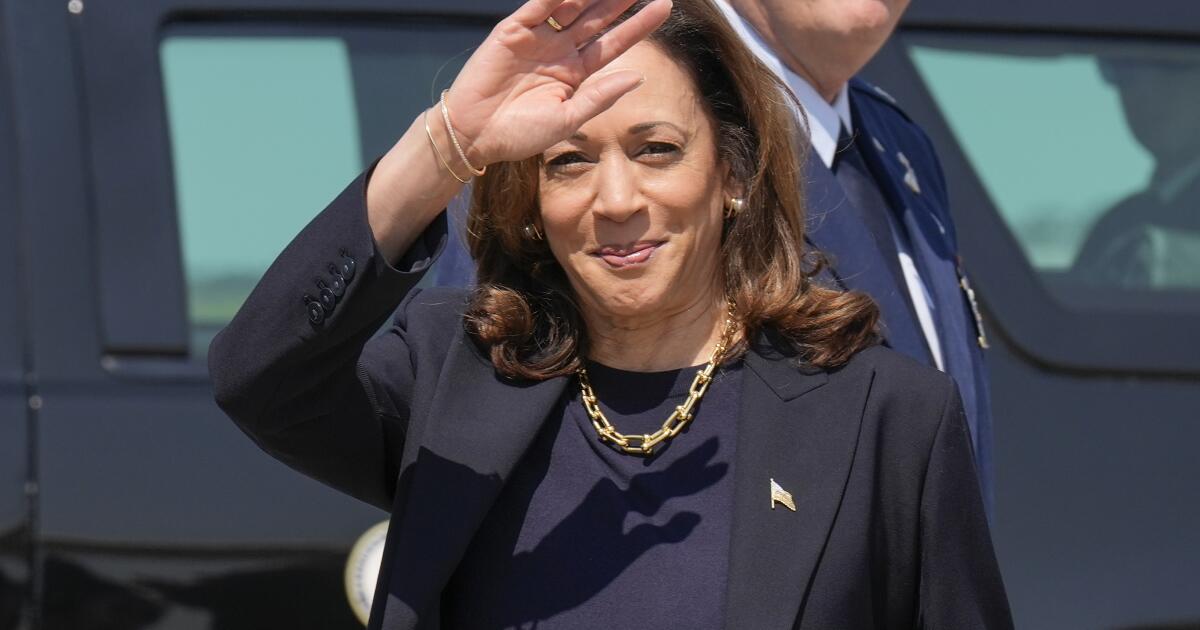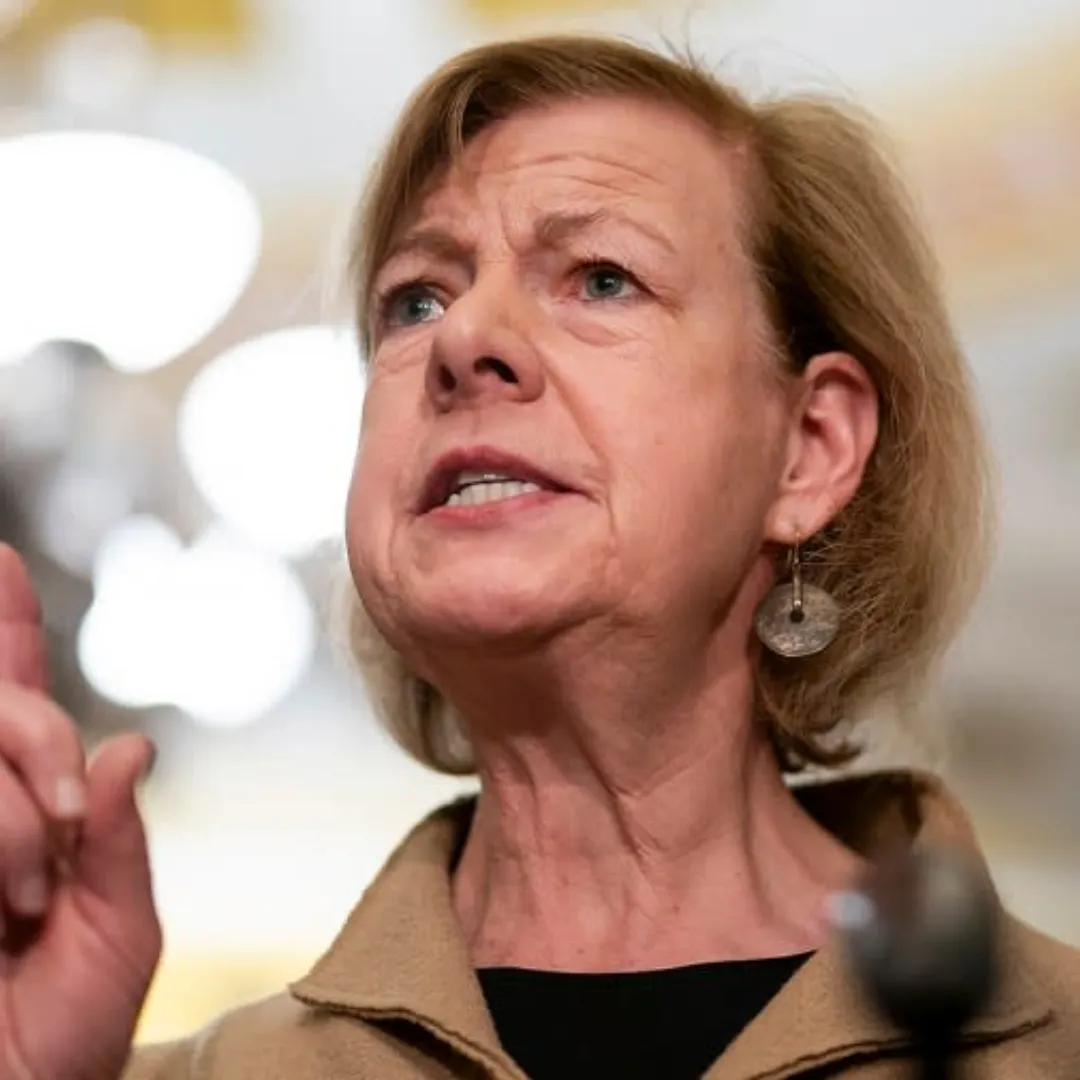Former Vice President Kamala Harris made headlines this week with her debut appearance at the Met Gala alongside her husband, former second gentleman Doug Emhoff.
The high-profile event, covered by Vogue on Monday, featured Harris in a custom-made gown by the fashion label Off-White, designed to reflect the evening’s theme dedicated to exploring Black style through tailored expression. Her look, a floor-length black and white gown split at the right shoulder, quickly drew attention both for its elegance and its deeper cultural significance.
Harris’s decision to wear Off-White, a brand founded by late visionary Black designer Virgil Abloh, resonated with this year’s Met Gala theme, titled Tailored for You.
The 2025 gala is the first in the event’s history to focus entirely on the legacy and influence of Black designers, with particular emphasis on the concept of the Black dandy and the ways in which tailoring has shaped Black identities.
The theme invited guests to express their relationship to Black style through structured silhouettes, symbolic fabrics, and culturally charged fashion statements.
Vogue’s coverage of the event included a full-page photograph of Harris standing with composure and confidence in her bespoke Off-White gown. The piece’s contrasting panels served not only as a visual nod to duality and balance but also as a metaphor for the complexity of identity and heritage.
The striking look quickly became one of the most discussed of the evening, with fashion critics and political commentators alike weighing in on its symbolism.
In her interview with Vogue, Harris emphasized the role of art in shaping public life. She said, “Art has always had a significant impact on not just culture, but also our policies and politics..

Artistic expression—whether it’s dance, music, visual arts, or fashion—has a way of capturing the mood and language of the people without words. Art has the power to shape the conversation about where we are today and where we need to go.”
Her remarks framed fashion not simply as a matter of taste or aesthetics but as a tool for social commentary and political connection. Ibrahim Kamara, creative director of Off-White, echoed this sentiment in his own statement to Vogue.
He said, “The true core of dandyism is rooted in confidence and strength. There is no person who exemplifies these characteristics more than Kamala D. Harris, someone who has overcome adversity and continues to be a beacon for so many.”
Kamara’s words placed Harris squarely in the center of the gala’s narrative, positioning her as both a cultural icon and a symbol of perseverance and power.
The response on social media was swift and overwhelmingly positive. The official Democratic Party account on X shared the same Vogue photo of Harris, accompanied by the caption, “Kamala Harris stuns at the Met Gala.”
The post was quickly reshared thousands of times and generated a surge of admiration from supporters who praised her fashion choice, her grace, and her embrace of the evening’s theme.
The Met Gala appearance marked a significant cultural moment for Harris, who has long balanced a serious political profile with a growing presence in cultural circles.
Her participation in an event like the Met Gala suggested a strategic shift toward deeper engagement with artistic and symbolic platforms, using fashion as a vehicle to communicate values and align with broader social narratives.
This year’s gala was notable for its explicit focus on the contributions of Black designers and artists, a move that many praised as long overdue. Attendees were encouraged to draw inspiration from the concept of the Black dandy—a historically rich aesthetic that combines elegance, defiance, and cultural sophistication.
Tailoring, central to the gala’s theme, was not just about form-fitting suits or precise cuts, but about how clothing has historically allowed Black individuals to assert identity, challenge stereotypes, and reshape public perception.
Harris’s gown, in that context, was more than a red carpet statement. It was a quiet assertion of unity, tradition, and cultural respect. The black and white color palette, the sharp tailoring, and the subtle asymmetry all contributed to a design that was at once contemporary and timeless.
It referenced heritage without being heavy-handed and expressed elegance without sacrificing meaning. Critics and observers noted that Harris’s appearance came at a time when the intersection of politics and popular culture is more significant than ever.
Public figures, especially women in leadership, are increasingly expected to navigate these arenas with nuance and intention. For Harris, the Met Gala was not just about fashion but about reinforcing her place in conversations about race, art, identity, and national values. It was a calculated move, and by most accounts, a successful one.
As the evening unfolded, the symbolism embedded in Harris’s wardrobe choice became the subject of conversation on news panels, fashion columns, and social media threads.
Political strategists suggested that the appearance may also signal a broader effort by the Democratic Party to connect with younger voters, cultural influencers, and minority communities through shared platforms of expression.

While some conservative commentators criticized the presence of a former vice president at what they described as a frivolous event, supporters pushed back by highlighting the gala’s charitable mission, its historical significance, and its evolving role as a space for cultural affirmation.
The Met Gala, they argued, is no longer simply a fashion spectacle but a forum for statements about justice, representation, and legacy.
Harris’s decision to work with Off-White added another layer of meaning to the moment. Virgil Abloh, the brand’s founder, was celebrated not just for his design brilliance but for the way he disrupted traditional power structures in fashion.
His work at Louis Vuitton and his creation of Off-White inspired a new generation of designers of color to pursue excellence on their own terms. By choosing Off-White, Harris was aligning herself with that legacy and affirming the importance of lifting up Black voices in creative industries.
The statement extended beyond her personal attire. It reflected a larger embrace of the gala’s theme and an acknowledgment of the role fashion can play in telling a nation’s story.
It was an act of cultural diplomacy, a sartorial answer to the evening’s prompt that carried the weight of history and the hope of progress. Harris, once again, demonstrated that she is as comfortable addressing the nation from a podium as she is using a red carpet to speak to broader values.
In the days following the event, praise continued to pour in from political allies, activists, and artists who saw the moment as one of grace, strategy, and resonance.
The appearance reaffirmed Harris’s evolving presence as not only a political figure but a cultural one, capable of embodying the complexities of power, race, gender, and representation in the modern American landscape.






